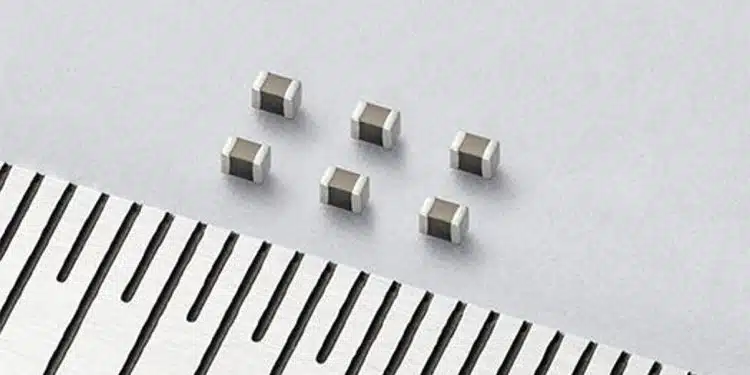KYOCERA announced it attains record-setting capacitance in one of the industry’s most widely-used MLCC capacitor types.
Kyocera Corporation announced that its’ Electronic Components Division has developed a new capacitor (MLCC) with EIA 0201 size (0.6 mm x 0.3 mm) and the industry’s highest*1 capacitance of 10 microfarads.
Samples will be available in September 2023.
As smartphones and wearable devices become more sophisticated, electronic circuits require MLCC devices in greater numbers and with higher capacitance values.
At the same time, designers are prioritizing miniaturization, which is creating unprecedented demand for higher-capacitance MLCCs in ever-smaller sizes.
Kyocera’s KGM03 series, measuring just 0.6 mm x 0.3 mm, is one of the most widely used MLCCs in smartphones and wearable devices. With greater capacitance from an MLCC this small, designers will be able to meet system requirements using fewer components and less space.
| Product name | KGM03 Series MLCCs |
| Size | 0.6mm×0.3mm×0.55mm Max. |
| Characteristics | X5R (EIA) |
| Capacitance | 10µF |
| Tolerance | K(±10%), M(±20%) |
| Samples availability | Shipping in September 2023 |
| Mass production | April 2024 |
| Rated voltage | 4.0Vdc |
| Production facility | Kagoshima, Kokubu Plant |
Compared to Kyocera’s previous components, the new 0201 MLCCs deliver an approximately twofold increase in capacitance, the highest*1 in the industry for 0201 case size.
Kyocera will continue developing electronic components that meet new market needs and make new societal benefits possible through wireless communications and “Internet of Things” technology.
*1: Among MLCCs in the 0201 case size (KYOCERA research, March 2023)































